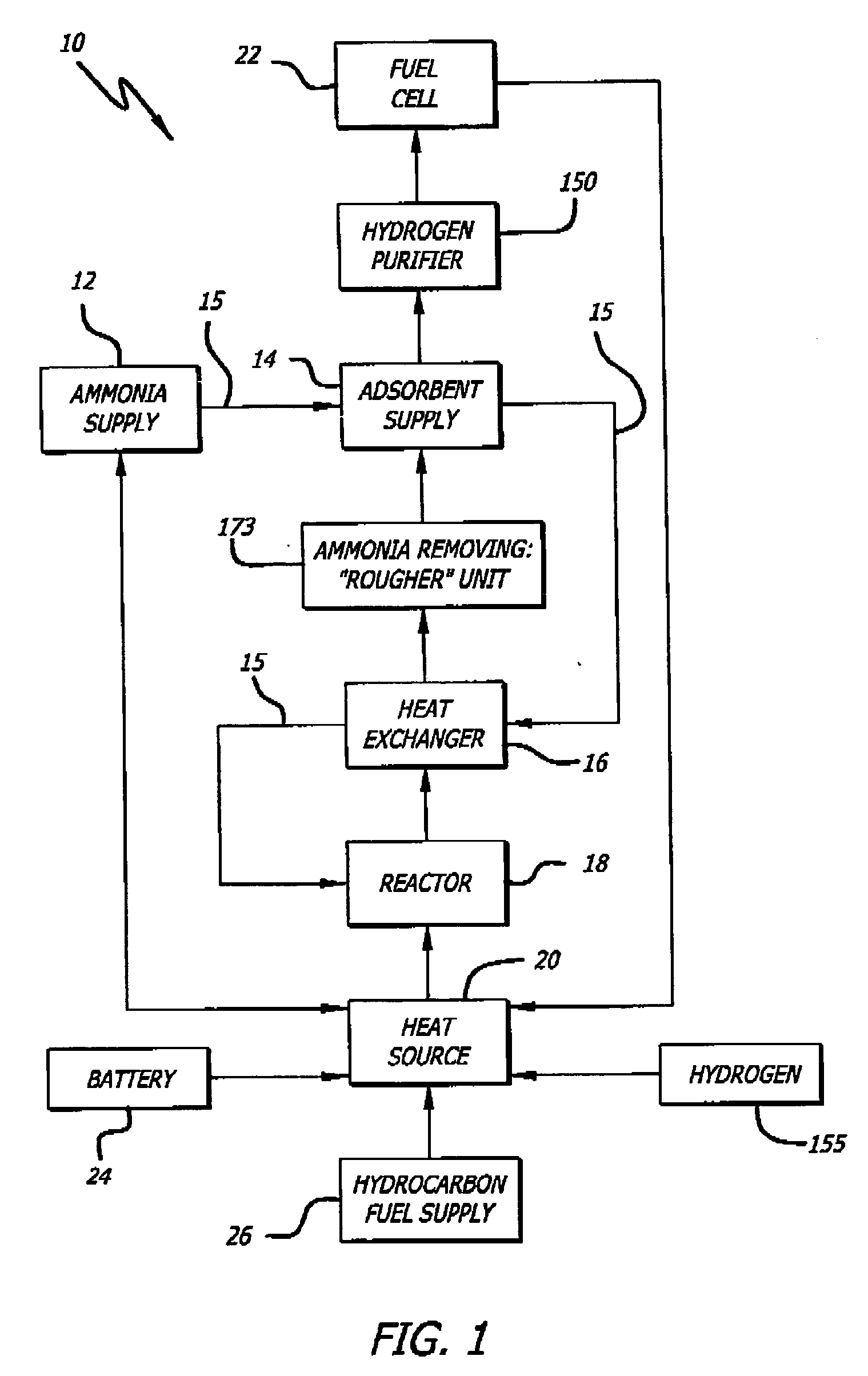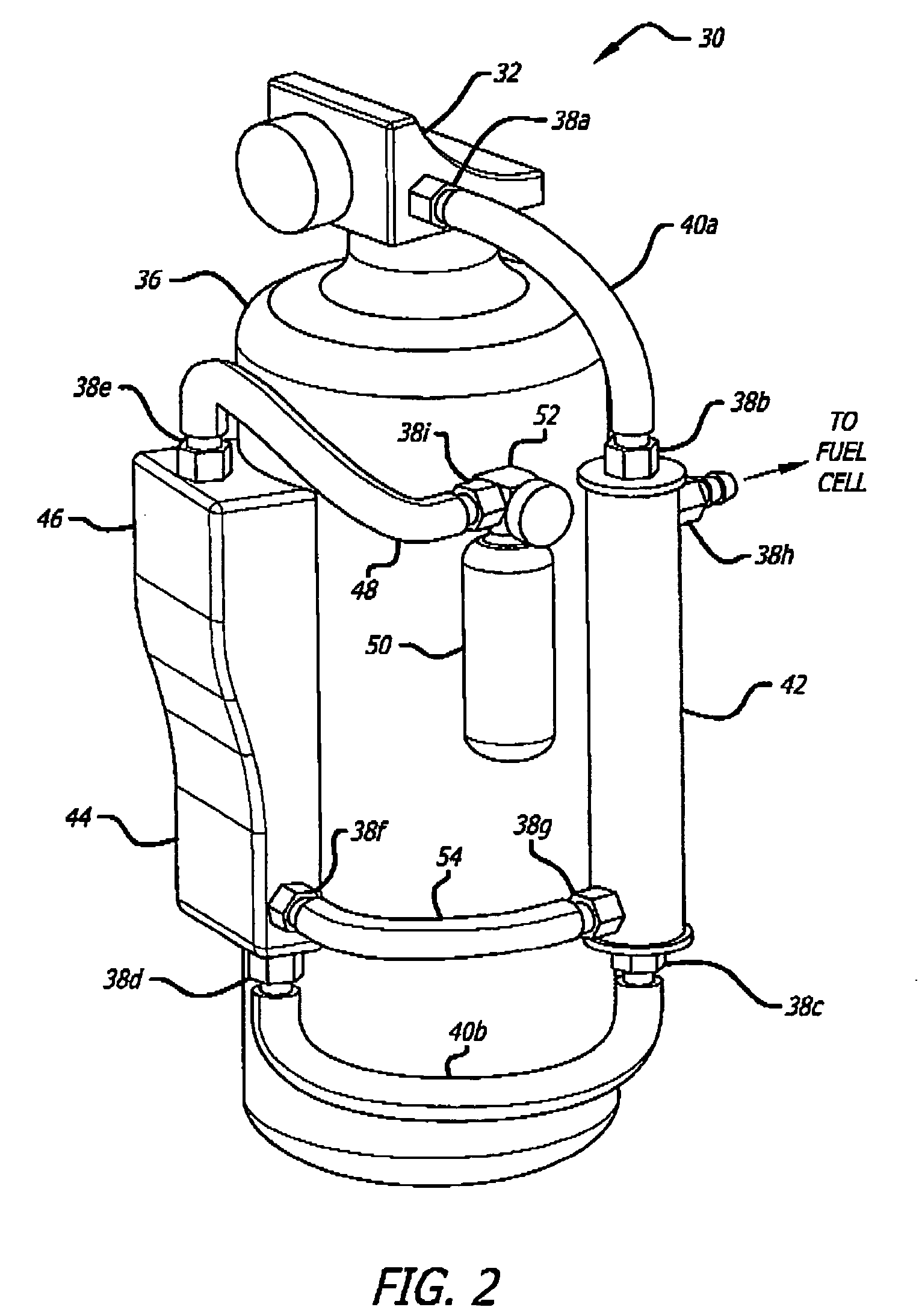Ammonia-based hydrogen generation apparatus and method for using same
a hydrogen generation apparatus and ammonia technology, applied in the chemical arts, can solve the problems of imposing significant design challenges, prohibitively large required adsorbent mass of such materials, and inability to provide compressed hydrogen, etc., to achieve enhanced heat transfer and reaction rate, reduce fabrication costs, and enhance heat transfer rate
- Summary
- Abstract
- Description
- Claims
- Application Information
AI Technical Summary
Benefits of technology
Problems solved by technology
Method used
Image
Examples
Embodiment Construction
[0068] Particular embodiments of the invention are described below in considerable detail for the purpose of illustrating its principles and operation. However, various modifications may be made, and the scope of the invention is not limited to the exemplary embodiments described herein.
[0069] An exemplary ammonia-based hydrogen generation apparatus 10 shown in FIG. 1 includes an ammonia supply 12, an adsorbent supply 14, a heat exchanger 16, an ammonia dissociation reactor 18 containing a catalyst 86 (FIGS. 9 and 10), and a heat source 20. The embodiment shown in FIG. 1 also includes a fuel cell 22. However, fuel cell 22 is not a required component of an ammonia-based hydrogen generation apparatus.
[0070] The ammonia supply 12 is a pressure vessel containing liquefied ammonia. Those of ordinary skill in the art will appreciate that such pressure vessels are commonly employed and readily available. The ammonia can be liquefied by compression (114 pounds per square inch) and / or by c...
PUM
| Property | Measurement | Unit |
|---|---|---|
| Temperature | aaaaa | aaaaa |
| Temperature | aaaaa | aaaaa |
| Temperature | aaaaa | aaaaa |
Abstract
Description
Claims
Application Information
 Login to View More
Login to View More - R&D
- Intellectual Property
- Life Sciences
- Materials
- Tech Scout
- Unparalleled Data Quality
- Higher Quality Content
- 60% Fewer Hallucinations
Browse by: Latest US Patents, China's latest patents, Technical Efficacy Thesaurus, Application Domain, Technology Topic, Popular Technical Reports.
© 2025 PatSnap. All rights reserved.Legal|Privacy policy|Modern Slavery Act Transparency Statement|Sitemap|About US| Contact US: help@patsnap.com



